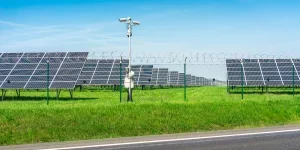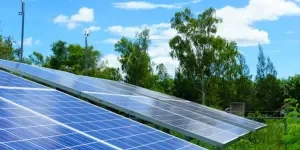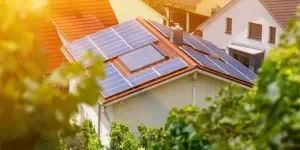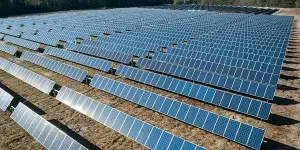- JRC bats for vertical solar installations along EU’s transport infrastructure to achieve energy transition
- Bifacial modules can help generate 391 TWh annually from 403 GW DC capacity the researchers expect such applications to help install
- These can help save land and also contribute to the decarbonization of the transport sector
A Joint Research Centre (JRC) report of the European Commission claims the bloc’s transport infrastructure holds potential for the European Union (EU) to install as much as 403 GW DC solar PV capacity. This is equivalent to 55% of its total solar PV capacity target for 2030.
If the EU installs 1 TW of solar PV capacity by 2030, as indicated by various market trends, via conventional ground-mounted PV it will need approximately 0.1% of total land area. However, ensuring this land availability will be a challenge as a large tract is reserved for agricultural activities while some falls under nature and landscape preservation.
Vertical installations then come up as a feasible application area for solar PV technology, especially when accompanied by bifacial modules that maximize solar energy generation, according to the report writers.
These installations will rule out land-use competition and also be a cost-effective alternative to fossil-fuel based electricity generation in transportation, reads the report completed under European Commission Joint Research Centre Annual Work Programme 2022/2023.
“This study proposes the installation of PV systems along the EU member states’ transport infrastructure, whose potential is largely untapped, thereby aiding the decarbonisation of the transport sector, while simultaneously reducing the land competition issue,” states the team.
According to their research based on pan-European geo-spatial analysis, the use of bifacial modules can help generate 391 TWh annually from this installed capacity.
Analysts believe using PV technology only for the railway lines could potentially generate 250% of the current annual electricity consumption of the EU railway network.
The researchers point at the growing interest in alternative PV deployment strategies such as agrivoltaics, floating PV, building integrated PV (BIPV) that attempt to provide a solution to the scarcity of land for larger solar installations. With PV in transport infrastructure, the EU has an opportunity to have an additional revenue to accommodate PV systems in existing built areas, they explain.
To achieve decarbonization of the transport sector, the bloc is promoting zero-emission vehicles with electric vehicles (EV) as a prominent technology. Installation of solar PV on or near the road infrastructure can help optimize the electric grid for this EV charging business and account for up to 15% substitution of conventional fueling along the Trans-European Network Transportation (TEN-T).
JRC says it has prepared a methodology to estimate the technical potential of large-scale installation of PV along the EU’s transport infrastructure at national and regional level. This can act as the basis for quantitative analyses of the possible impact of such solar PV energy generation.
Its report with the title European transport infrastructure as a solar photovoltaic energy hub will be available for purchase on ScienceDirect website.
An earlier JRC report in October 2023 claimed agrivoltaics can help the bloc achieve 944 GW DC installed capacity using 1% farmland (see Agrivoltaics Can Help Exceed Targets Under EU Solar Strategy).
Source from Taiyang News
Disclaimer: The information set forth above is provided by Taiyang News independently of Alibaba.com. Alibaba.com makes no representation and warranties as to the quality and reliability of the seller and products.




